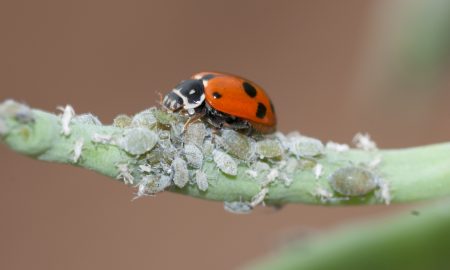A collaborative trapping program for native budworm moths across eastern Australia will help focus efforts in monitoring for caterpillars in pulse and canola crops
Trapping network
Native budworm (Helicoverpa punctigera) moths are capable of migrating hundreds if not thousands of kilometres in spring. Typically, moths migrate from the north-west, often originating from inland regions that have previously benefited from episodic rainfall events in autumn and winter.
cesar is collaborating with colleagues from SARDI, QDAF and agronomists and growers in Victoria, New South Wales and Queensland to trial an advanced warning system for native budworm infestations in the eastern cropping zone.
A broad network of pheromone traps (based on the female sex scent) has now been established throughout the cropping regions of eastern Australia. Pheromone traps specifically attract male moths of native budworm, providing an indication of current female egg-laying activity.
To supplement these, a network of traps in western Queensland and northern South Australia, facilitated through the University of New England, is providing an early indication of (remote) inland breeding and moth activity of native budworm.
A small number of automated traps, owned by Adama Australia Pty Ltd., are also being evaluated across the network.
From this network, we will provide forecasts for the southern New South Wales and Victorian regions.
Forecasts
Based on weekly moth catches, climatic records and our predictive model, we can estimate:
- possible movement of moths, mostly into districts to the south or southeast;
- likely egg hatch dates (first instar) for different regions, assuming that moths lay eggs locally and that their eggs survive environmental conditions (rainfall, temperature extremes) and local parasitism;
- dates on which the young caterpillars may first become detectable in sweep nets (2nd or 3rd instar);
- the approximate catch thresholds at which crop monitoring should commence.
The forecast dates are based on a growth-rate model for native budworm larvae, using average regional temperatures. For example, eggs laid on Mallee crops would take about 16 days to hatch from the 1st September, but only 10 days if laid on 1st October.
This approach has been previously used successfully for native budworm in southern Australia and continues to be used in Western Australia. However, it is only a guide.
Previous research has shown that egg-laying peaks can be directly related to moth catch peaks, but peaks in egg-laying can sometimes occur in the absence of peak moth catches.
The traps are also sparsely distributed which reduces the resolution of predictions.
Current moth activity
For the past week, trap catches have been low in all Victorian and New South Wales, but some moderate catches were caught on the South Australian York peninsula.
It is unlikely that moth flights from this region would impact on Victorian or New South Wales cropping zones.
Nonetheless, there has been some moth activity observed in August that will have resulted in small numbers of larvae in some flowering crops.
As canola in most districts has commenced flowering, indicative damage thresholds for canola are 5-10 larvae per 10 sweeps.
Acknowledgements
We thank the following for providing various forms of support to this forecast service:
Institutional Support
Dr’s Peter Gregg and Alice del Socorro – School of Environmental & Rural Science, University of New England, Armidale
Bill Kimber – SARDI
Alex Mills – Adama Australia
Trap operators
Brad Bennett – Consultant, AgriVision (Victorian Mallee)
Jim Cronin – Agronomist, Landmark (NSW Central West Slopes and Plains)
Alan Edis – Agronomist, Landmark (NSW Central West Slopes and Plains)
Bill Gardner – Agronomist and Grower, (Victorian Wimmera)
George Hepburn – Agronomist, Tylers Hardware & Rural Supplies (Victorian Wimmera)
Rob Sonogan – Consultant, AgriVision (Victorian Mallee)
Greg Toomey – Agronomist, Landmark (Victorian Northern Country)
David White – Agronomist, Delta Agribusiness (NSW Riverina)
Cover image: Photo by Andrew Weeks, Cesar Australia





